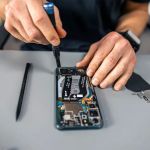How to Restore a System Image Using a Bootable USB: A Step-by-Step Guide
- What is System Image Restoration?
- Why You Need a Bootable USB for System Image Restoration
- Preparing Your Bootable USB for System Recovery
- Step-by-Step Guide to Restoring Your System Image
- Common Issues and Troubleshooting
1. What is System Image Restoration?
System image restoration is the process of restoring your computer's operating system, programs, and files to a previous state using a system image backup. This is an important tool for recovering your system after a crash, data corruption, or other severe software issues. A system image is essentially a snapshot of your entire computer setup, enabling you to return your system to the exact state it was in at the time the backup was created.
2. Why You Need a Bootable USB for System Image Restoration
To restore a system image, you need to boot your computer from a USB drive, especially if the operating system is not loading properly. A bootable USB allows you to access the system recovery tools, which are critical for restoring a system image from a backup. Without a bootable USB, you may not be able to access the recovery options on your computer, making it impossible to restore your system image.
In addition, using a bootable USB is a fast and effective method for recovering your system, as it bypasses any issues with your computer's internal hard drive that may be preventing it from booting.
3. Preparing Your Bootable USB for System Recovery
Before you can restore a system image using a bootable USB, you need to prepare the USB drive. This process involves several key steps:
- Step 1: Get a USB drive with at least 8GB of storage.
- Step 2: Download the Windows Media Creation Tool or any other system recovery tool that supports creating a bootable USB drive.
- Step 3: Follow the instructions to create the bootable USB. This typically involves selecting the USB drive, choosing the operating system version, and allowing the tool to write the recovery data to the USB.
- Step 4: Once the process is complete, safely eject the USB drive and keep it in a safe place until needed.
Once your USB drive is prepared, you're ready to move on to restoring your system image.
4. Step-by-Step Guide to Restoring Your System Image
Now that you have your bootable USB ready, here’s how you can restore your system image:
- Step 1: Insert the bootable USB drive into the computer that needs recovery.
- Step 2: Restart the computer and press the boot menu key (usually F12 or Esc, depending on your computer model) to enter the boot menu.
- Step 3: Select the USB drive from the boot menu to boot from the USB.
- Step 4: Once the system recovery environment loads, select the option to restore a system image from your backup.
- Step 5: Follow the on-screen instructions to select the system image backup you want to restore and begin the restoration process.
- Step 6: Wait for the process to complete. This may take some time depending on the size of the backup.
- Step 7: Once the restoration is finished, your computer will reboot, and your system will be restored to the selected image.
That’s it! Your computer is now restored, and you should be able to continue working with the same setup as before the issue occurred.
5. Common Issues and Troubleshooting
While restoring a system image using a bootable USB is generally straightforward, there can sometimes be issues. Here are some common problems you may encounter and how to troubleshoot them:
- Issue 1: The USB drive isn't detected during boot.
- Issue 2: The system image backup isn't found.
- Issue 3: The system image restoration fails.
Ensure that the USB drive is properly inserted and that the boot menu key is pressed at the correct time during startup. You may also need to check your computer’s BIOS settings to ensure USB booting is enabled.
Make sure the backup image is correctly saved on an external hard drive or cloud storage that is connected and accessible during the restoration process.
If the restoration fails, verify that the system image is compatible with the version of Windows you are using and that the image isn't corrupted. Try creating a new backup if necessary.
By following these troubleshooting tips, you can address most issues that may arise during the restoration process.
If you're looking to create a bootable USB for system restoration, Ninja Stik offers the best tools for creating recovery USBs. Learn more today!






























